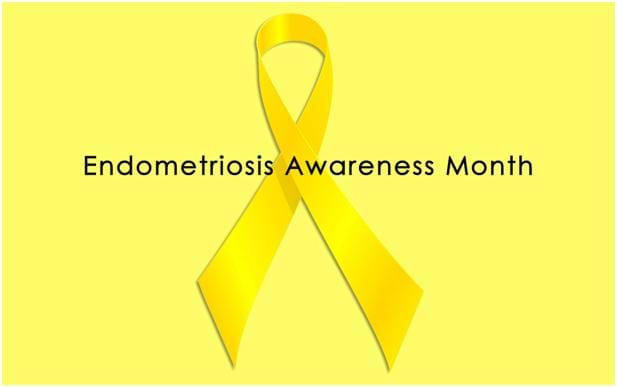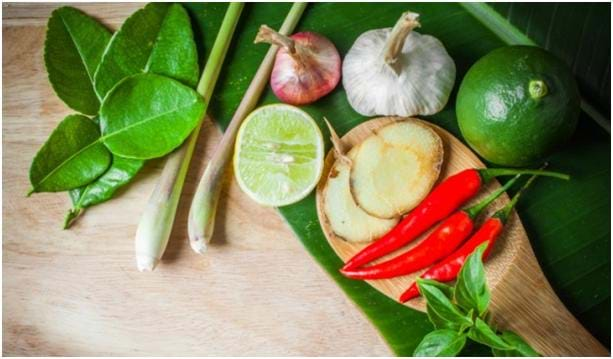12 easy nutrition tips to ease endometriosis and pelvic pain

Last month, I wrote about how hands-on women's health physiotherapy is effective for women who suffer from endometriosis. This month I cover some practical nutrition tips to manage the pain and symptoms associated with endometriosis. This is information I provide as a Women's Health Nutrition Coach to my patients with endometriosis.
In endometriosis and chronic pelvic pain conditions, there is often a repetitive inflammatory process occurring within the pelvis. Pain is often a cardinal symptom of inflammation and, without getting too technical, the presence of something called "cytokines" in the body suggests inflammation. Interestingly, research shows the presence of several inflammatory cytokines in women with endometriosis.
So, what do pain, inflammation and inflammatory cytokines have to do with endometriosis?
Well, understanding this process provides the basis for why an anti-inflammatory diet is important in managing this disease. Certain foods have been proven to reduce inflammation and these are recommended for women with endometriosis. Knowing this makes it easier to stick with dietary changes, because ultimately you are not just reducing your symptoms but also reducing the growth of the disease. So let's get into the anti-inflammatory foods.

Some general anti-inflammatory foods that you can simply begin to incorporate into your diet and cooking include
- lime zest
- mushrooms (button, oyster, honey-brown, shiitake, enoki)
- sweet potato, onion (be careful with this if you have IBS and are sensitive to FODMAPs)
- Thai spices such as kyeng, dill, kaffir lime, chilli, teaw, sweet basil, pea eggplant
- other herbs and spices that are anti-inflammatory including curcumin (turmeric), ginger, cinnamon, cloves, oregano and sage.
Please bear in mind that every woman with endometriosis is different and a blanket diet cannot be given to every woman. A woman with endometriosis may have other concurrent conditions that would warrant other dietary modifications. This could include irritable bowel syndrome, interstitial cystitis, poly-cystic ovarian syndrome and pudendal neuralgia.
There are some general recommendations that are given for women with endometriosis. These suggestions can include
- ensuring you have clean protein, healthy fats and fibre at every meal
-
going gluten-free. More and more research is showing significant improvements in women who stop eating gluten. Gluten ranks as one of the highest toxins for women with endometriosis. Simply going gluten-free without any other changes can be enough to reduce pain significantly.
Some women can also be sensitive to other grains, but if not, you can enjoy brown rice, buckwheat, quinoa and teff as alternatives.
- limiting soy. Pelvic pain is found to be higher in women who regularly eat soy. If you need to have soy, its best to stick with low amounts of non-GMO, organic, fermented whole soy foods.
-
limiting diary. A lot of women with endometriosis have developed sensitivities to dairy. This can be sensitivity to lactose, which is a sugar found in dairy, or sensitivity to casein, which is a protein found in dairy. Dairy can cause inflammation which can lead to pain.
Simply substitute for non-dairy alternatives e.g. almond or other nut milk, rice milk, coconut milk, coconut yoghurt, coconut cream and coconut ice cream. Grass-fed butter is usually well-tolerated.
- limiting sugars. Processed and refined sugars wreak havoc on the gut. Switch to coconut sugar or pure maple syrup for sweeteners. If you have a chocolate addiction try Loving Earth brand of chocolate instead.
- limiting coffee and alcohol.
-
enjoying increased high omega-3 fatty acids. Foods that are high in omega 3 are your powerhouses of anti-inflammatories. They can even be used as an alternative to pharmaceutical NSAIDs!
For example, flaxseeds/linseeds, walnuts, brussel sprouts, cauliflower and fish such as sardines, salmon, tuna, blue mackerel, gemfish, shrimp
- increasing your vegetable intake. Have rainbow colourful vegetables at every meal, making sure you have lots of green leafy vegetables. Sulfur containing vegetables and cruciferous vegetables help with estrogen detoxification. This is found in broccoli, brussel sprouts, cauliflower, kale, leafy greens and cabbage.
- increasing your fibre intake. This is effective for estrogen detoxification. Simply add chia seeds or flaxseeds to your meals. Your goal here is 35-45g of fibre per day.
- increasing your antioxidants. Foods high in Vitamin C are very effective for reducing inflammation. These can include papaya, bell peppers, broccoli, brussel sprouts, strawberries, pineapple, oranges, kiwi fruit, cantaloupe and cauliflower.
- drinking lots of water and tea. English breakfast and green tea are anti-inflammatory teas.
- taking probiotics. Cycle between 3 different brands of quality probiotics every 3 days for optimal gut health.
So there you have it. Twelve tips to reduce the pain associated with endometriosis. You can start your journey to a healthier pain-free life by adopting these nutritional strategies.
If you would like more personalised nutrition coaching for endometriosis or pelvic pain, you can enquire with one of our women's health physiotherapists at The Fix Program.